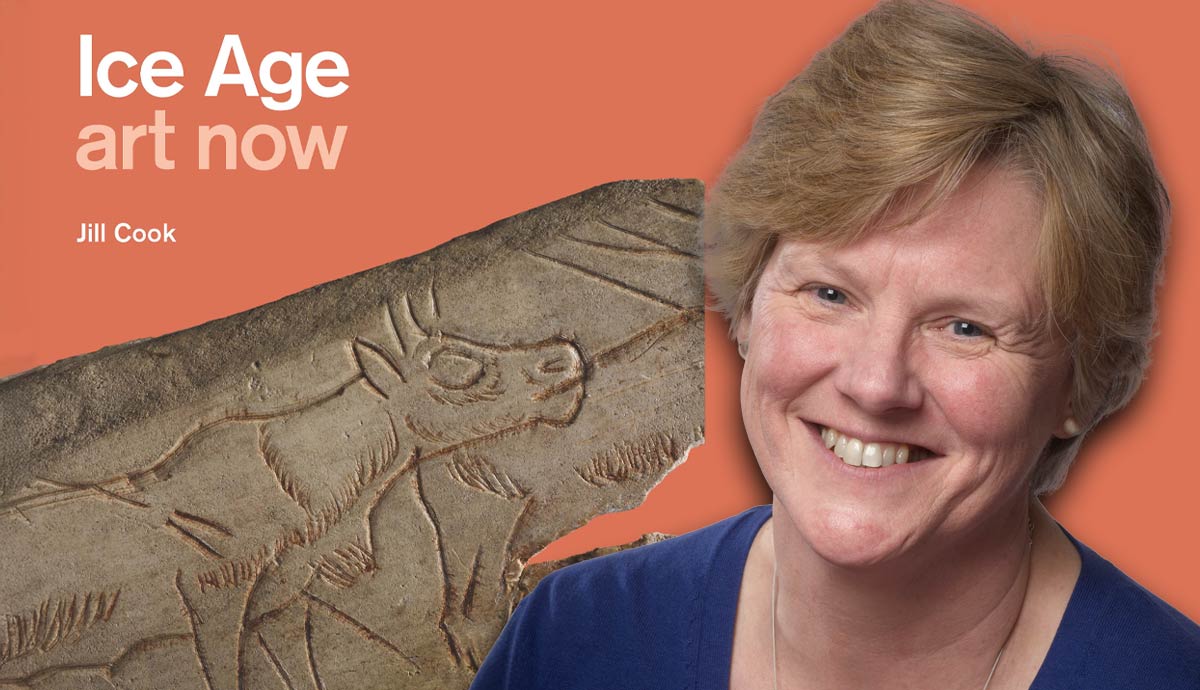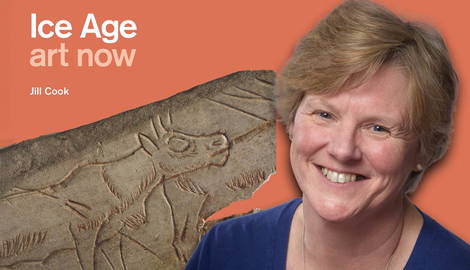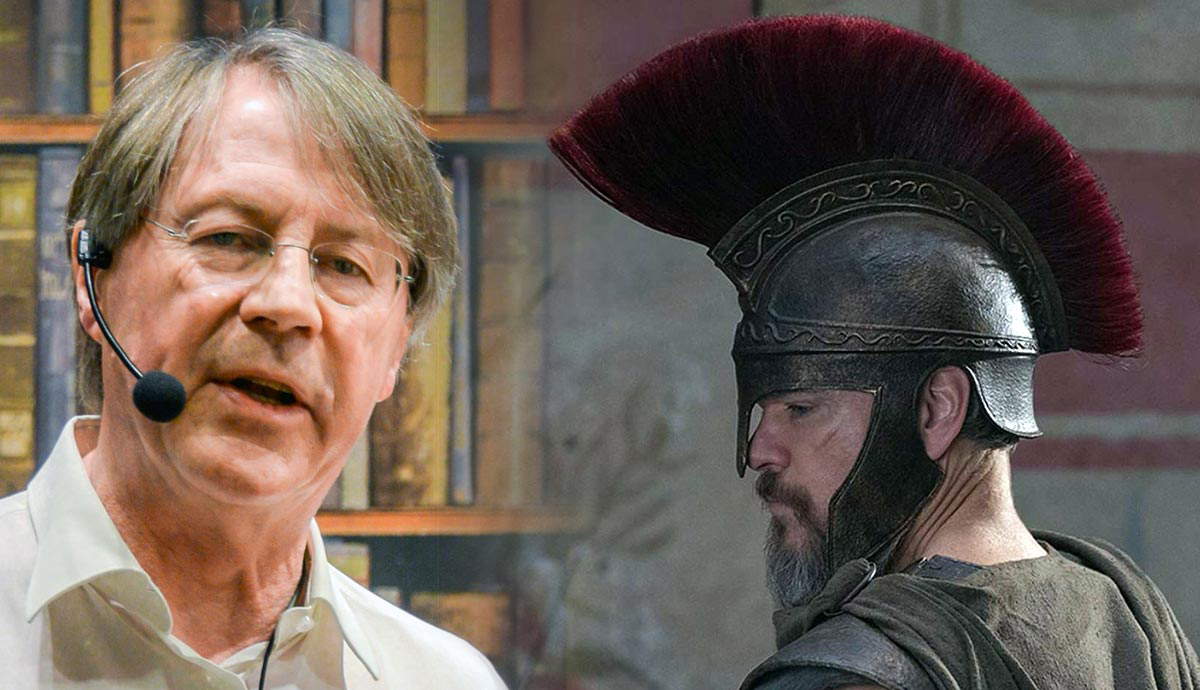
In a discussion with TheCollector, Jill Cook, Keeper of the Department of Britain, Europe, and Prehistory at the British Museum, tells us about her latest book, “Ice Age Art Now” by British Museum Press. The conversation explored the concept and nature of Ice Age art, its connection to modern art, the enduring nature of emotion in art, some questions about future research, and more.
The full video interview is available at the end of this article.
An Artistic Renaissance During the Ice Age?

“Ice Age Art Now” focuses on a specific period of the Ice Age, spanning from 24,000 to 12,000 years ago. While there is art predating this period, Cook explains that this timeframe was chosen because it aligns best with the British Museum’s collection and also marks the beginning of a remarkable renaissance in image-making.
This artistic flourishing occurred after a period of intense cold, known as the Last Glacial Maximum (around 20,000 years ago). During this time, ice sheets extended far south across northern Europe, sea levels were significantly lower, and the climate was extremely dry due to much of the world’s water being locked in ice. This led to a scarcity of water for animals, forcing them and the people who followed them to migrate south. Consequently, Central and Northern Europe became largely uninhabited, with humans on the verge of extinction in the region. As the climate began to warm around 18,000 years ago, people started to repopulate their former territories, following the animals. By 14,000 years ago, some even reached Britain, which was still connected to mainland Europe by a land bridge.

Archaeological records from this period show bone, antler, ivory, and stone pieces adorned with drawings and sculptures. A key characteristic of this later Ice Age art is its emphasis on patterns and drawing, primarily depicting animals and demonstrating a strong connection to nature. Cave painting, which had been ongoing, continued into this period. However, particularly interesting is what’s happening outside of the caves:
“What’s happening outside is this amazing love of drawing using a stone engraving tool, we call burin, which was held like a pencil. In their drawings, the humans depict the animals around them, reflecting how very much part of nature at this time people were. They draw realistically, or they abstract, sometimes they sculpt.”
“The need to make art is the same”

Cook explains that “there’s no singular birth of art”. Art emerges globally and at different times, “where it is needed, where it is wanted.” This fundamental human urge to create is a constant across history:
“The need to make art is the same as it’s always been amongst us as people with emotions and feelings. It arises in order to provide all sorts of senses of identity, of heritage, of connection, status, power, of spiritual well-being as well as acknowledging and connecting with the spiritual world and the realms of the cosmos. So any or all of these things might apply at any time. What we’re looking at during the Ice Age is those things expressed in the knowledge of the world of the time. So, when you talk about perspective in the late Ice Age art, it’s not perspective in the sense of an architectural perspective as you have it in the historic Renaissance, but definitely, you have the position of animals one to another, which showed distance and composition within a landscape. So, what is drawn will depend on your economic, social, historic context. The reasons for doing art remain very much the same.”
She further explores the idea of art as a language. Much like today, art back then, through various patterns and symbols, communicated certain meanings, “just as if you or I were wearing a t-shirt with a sports logo on it, we would recognise that”. However, after a few thousand years these meanings are lost to us, but still we surely know that through their art, the Ice Age humans “are communicating something.”
The Modernists and Ice Age Art
The Impressionists and many other modern artists, such as Picasso, Matisse, Miro, and others, found inspiration in Ice Age art.
“When the Cave of Altamira was discovered, it was doubted as a fake. The accusation was that it had been done by a mediocre impressionist. But then, as more art on cave walls was discovered, it was realised that it was really a genuine thing. So 20th-century artists began to look upon these works and see in them the sort of liberation they were looking for from the historic conformities of art. They could see art without frames, they could see art without outlines, they could see the blurring of lines and effects produced by wash.”
Grief in Ice Age Art

The Ice Age feels “ages” away, but humans were humans back then and are humans now, and one constant of the human experience is the experience of emotions.
“As human beings, those very basics of emotions and feelings are the same. Anatomically the same, our brains are the same. The endorphins and the hormones that govern what happens in our lives are the same. “
According to Jill Cook, recognizing emotions such as grief or love in the art of the period is challenging. Still, she does feel a strong connection when contemplating the ornaments adorning the bodies of children who have died of malnutrition and been buried with the jewellery they had worn in life.
“I can imagine it [the parents’ grief], but I cannot prove it because I don’t have a signed piece of paper saying that this was made by Mr. and Mrs. Flintstone after they buried their children. I can know that they have both scurvy and rickets and a four-year-old and a two-year-old child. They’re wearing quite thick animal skin clothing, so sunlight doesn’t reach their skin. They also have scurvy, which is a lack of vitamin C and that’s because there is a lack of green stuff for fruit and vegetables. So they have a dietary deficiency and that’s brought about by the climate in which they’re living… So these children pass away from basically natural causes, but the way they are so tenderly placed in their grave and the way their jewelry is placed upon them is a communication about the feelings of both the children and the adults. It’s a reference of care, of heritage, of identity, of grief, of love.”
Oh wow! Isn’t that Ice Age artwork lovely?

When asked about her favorite object, Cook highlights a large stone with three drawings of chamois, an “extraordinary composition” that uses the rock’s natural shape as the landscape:
“Chamois live in little herds of females, and the males are lonesome. They just live on their own except when they need to mate, which happens in around September…So what we’re seeing in this picture is a male chamois doing his alpha male ‘here I am’ posing, and the female all ready for it to happen. So it’s a lovely scene, but the fascinating thing is the way the shape of the rock has acted as the landscape. So no drawings of rocks or trees or grass or anything like that, but just the shape of the rock. The shape of the rock has been used to carry these drawings…it’s a lovely piece of almost like a field guide to these animals at that time.”

Cook’s main hope for her book is that people will be able to enjoy the Ice Age images. She believes that despite its important role, archaeology can sometimes provide data that feel sterile. She encourages readers to look at Ice Age art and say, “Oh wow, isn’t that lovely?” just as one might be moved by a Renaissance painting without knowing every detail of its creation.
Looking ahead, Cook believes the why questions about Ice Age art are pointless. Instead, research should focus on “how was that done? Where is it? What is it? When was it?” She’s excited about non-destructive scientific analyses of paints to trace the work of a particular image maker, as well as fingerprinting techniques, which have allowed for the identification of five artists from over 30,000 years ago in the Sauve Cave. She also foresees AI playing a role in assessing patterns, revealing more about ethnicity and heritage. Cook concludes: “We’re not done yet. We’re not even started yet. So, you know, we’ve got to keep at it.”
“Ice Age Art Now” by Jill Cook is available from British Museum Press.
Watch the full interview here:










